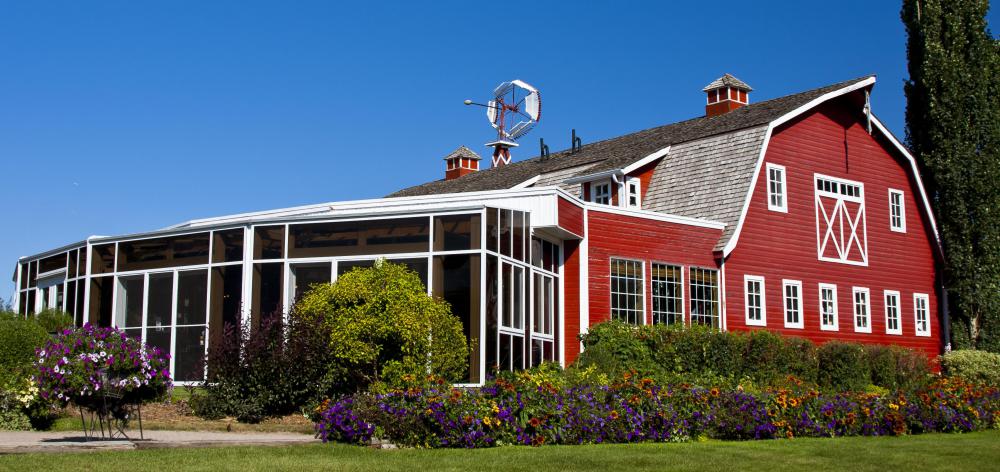At WiseGEEK, we're committed to delivering accurate, trustworthy information. Our expert-authored content is rigorously fact-checked and sourced from credible authorities. Discover how we uphold the highest standards in providing you with reliable knowledge.
What Are the Best Tips for Making a DIY Sunroom?
A do-it-yourself (DIY) sunroom can create a great space for relaxation, play, and entertaining, and may even add to home value. Building a DIY sunroom can take some time, preparation, and expense, so it is important to adequately research the various options before plunging ahead with building plans. Some of the best tips for creating a homemade sunroom include choosing the right direction of exposure, planning ahead for climate control, and considering a pre-fabricated kit.
Exposure angle dictates the amount of sunlight a DIY sunroom will receive, as well as the time of day the room can be used most effectively. Most of the time, a southern exposure will result in fairly even, strong light throughout the day, while a northern exposure provides even, weaker light. Eastern exposures will receive the most light during the morning and early afternoon, while western exposures may allow for spectacular sunset views and golden afternoon warmth. In the southern hemisphere, these qualities may be reversed. Choosing the direction of exposure can have an enormous effect on room usage, decor, and climate systems, so consider making this choice the first major decision.

Insulation levels and heating or cooling systems can help determine the level of climate control in a DIY sunroom. While the purpose of a sunroom is to increase access to sunshine, a room may become unusable if blazing heat or icy chill cannot properly be counteracted. Window selection can have a major impact on the levels of insulation in a sunroom. For example, sunrooms that are meant to be used only in warmer months may be able to take advantage of inexpensive single-glazed glass, which allows in lots of light, but provides limited insulation. For sunrooms that will be used year-round, double-glazed or metal-coated glass provides better insulation that allows light in while keeping excessive heat or cold out. While windows with better insulation can be considerably more expensive, they can greatly improve the useability of the room.

Another important tip for climate control in a DIY sunroom is the use of additional heating or cooling systems. Ceiling fans can be an inexpensive way to increase airflow and reduce temperature without using a lot of electricity. Electric fans, mobile heaters, and window air conditioners can also help improve climate control and help make a room viable regardless of the outside temperature.

For those who want a DIY sunroom, but don't feel confident building the entire room from scratch, a sunroom kit may provide the perfect compromise. These prefabricated kits are available in varying sizes and shapes, and offer many customizations in terms of color and decor style. A sunroom kit simply needs to be assembled, since all wood, glass, and metal pieces are pre-cut and ready for installation. Building a sunroom from a kit can result in a much faster completion time, and also give reassurance about safety and material quality.
AS FEATURED ON:
AS FEATURED ON:














Discussion Comments
If you are planning to build a DIY sunroom, I have a tip that will help you get the most out of your new room. When choosing screens for this project, make sure you use those that are durable, sturdy, and made of quality material. If you use cheap screens, you will likely have to replace them frequently because of wear and tear.
Sunrooms are typically used frequently for gathering and entertaining. It is common for screens to get damaged with these types of activities taking place in the room. This is why it is important not to skimp on the quality of the screens you use when you build your DIY sunroom. If necessary, you can budget and save money on other materials, such as the tools and wood you will need for the job.
Though most people place a DIY sunroom in the back section of their homes, these multipurpose rooms also look great in the front of a house. If you have a front porch, you already have the foundation for turning it into a DIY sunroom that will be great for relaxing or entertaining.
Post your comments